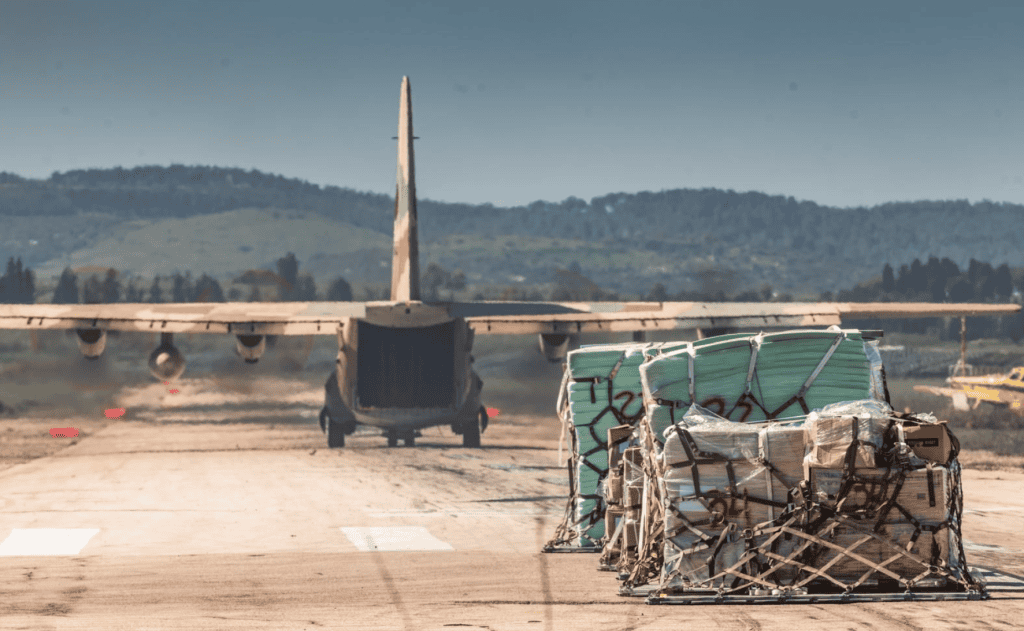
On March 11, the Israel Defense Forces targeted Hezbollah in Lebanon after two days of increased Hezbollah attacks on Israel. Airstrikes in the Beqaa Valley targeted sites that “belong to Hezbollah’s aerial forces that planned and carried out various attacks against the State of Israel.” The IDF said this was direct retaliation for Hezbollah using drones or unmanned aerial vehicles to target the Golan Heights over the last week.
The Hezbollah escalation in attacks began on March 9 and continued into March 10. In the morning on March 10, Hezbollah launched 35 rockets toward Mount Meron. Hezbollah has targeted this area before, launching attacks on an IDF base located on the mountain. Footage of the incident showed many rockets falling in a forest near the mountain. The IDF said that some of the projectiles were intercepted. The IDF also said that overnight between March 9 and 10, warplanes had struck an “anti-tank missile launch post” in Lebanon. The IDF also struck the site of the launches fired towards Meron.
Hezbollah continued its attacks throughout the day, including an attempt to launch an anti-tank missile toward the Mount Dov or Sheba’a Farms area which Hezbollah claims is part of Lebanon. “IDF fighter jets and aircraft were directed to strike the cell before they were able to carry out the attack.” In another incident, a Hezbollah drone targeted Mount Hermon, the large mountain that towers over the Golan Heights. This mountain has a ski resort on it that Israel often opens during the winter, but it has been closed due to the attacks. Hezbollah sought to shift its attacks toward this area on March 10. After the drone crashed, another thirty rockets were fired at the area. The IDF responded with artillery and struck a launcher.
More attacks by Hezbollah followed on March 11, with a UAV infiltrating an area near the Golan. The IDF said that it had detected “two aerial targets that crossed from Lebanon into Israeli territory that fell in open areas.” It was not clear if these targets had been intercepted or crashed of their own accord. The increased attacks by Hezbollah on Mount Meron and the Mount Hermon appear to be part of a strategy by Hezbollah to try to target specific sites in the north. It has targeted IDF bases in the past and claimed to target surveillance sites on the border.
Israel’s retaliation is proportional both to the type of attack and the type of threat. For instance, rockets and ATGM attacks are often met with artillery or other types of short-range precision fire. However, the longer range drone attacks are met with longer range strikes. The Israeli retaliation on March 11 took place more than 80 miles inside Lebanon. The pro-Iran Al-Mayadeen network said that the last time the IDF struck an area so far inside Lebanon was on February 26. At the time, Hezbollah claimed it had fired 60 rockets at Israel in retaliation for the Baalbek strike.
The rising tensions in the north also came as Israel carried out an exercise to reinforce training for long-range logistical supply to forces. “The IDF is exercising providing supplies under fire as part of operational readiness in the northern arena,” the IDF said. The drill saw C-130s bring supplies to an airfield. The exercise included Northern Command in cooperation with the Israeli Air Force and ground forces. “Equipment, water, fuel and ammunition were unloaded from the aircraft, the IDF said.
The use of C-130s to carry out airdrops and supply operations have increased since the Hamas attack on October 7. More than 110 tons of supplies have been brought to Gaza using this method, the IDF says. “The IDF is ready to conduct similar operations in the northern arena as well—extensively and under fire if necessary,” the IDF said on March 11. This is a clear reference to being able to supply troops in the field if there is escalation in the north. It is also a message to Hezbollah given escalation by the Iran-backed group in recent weeks.







